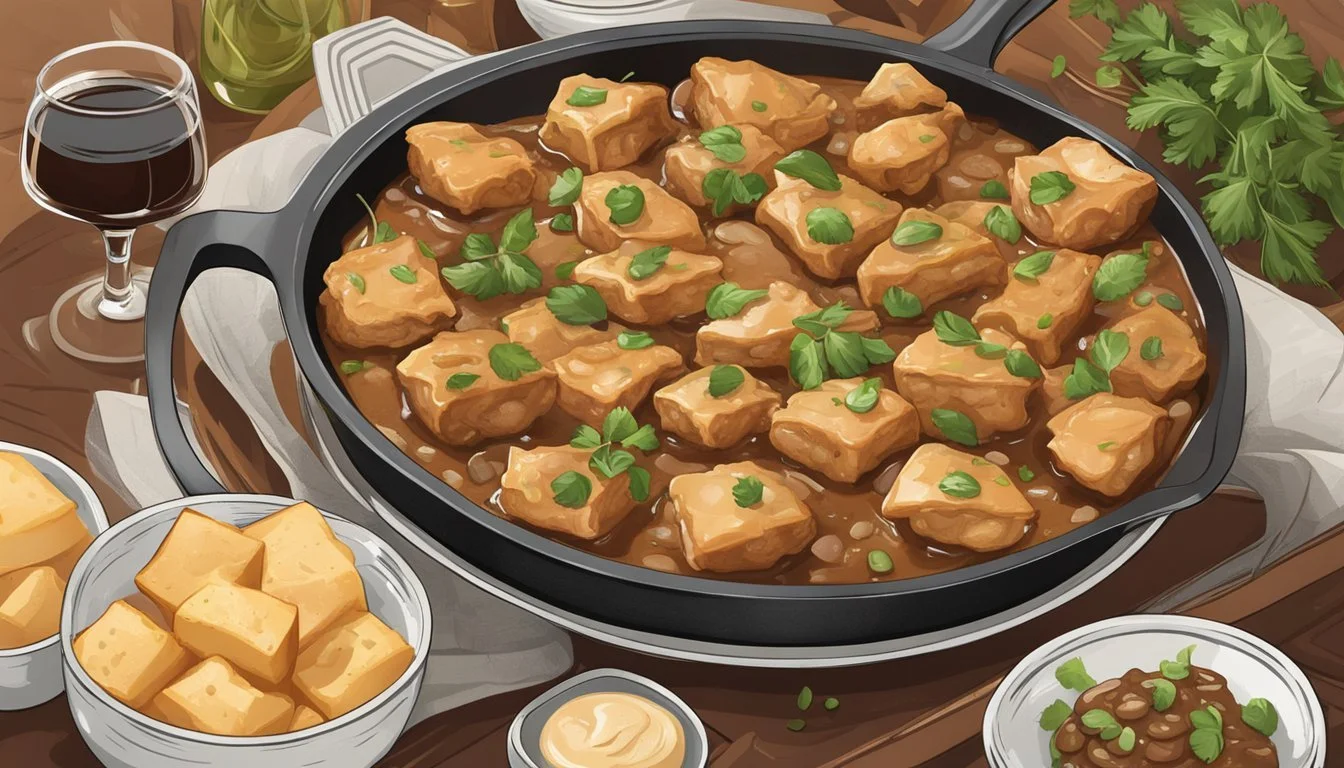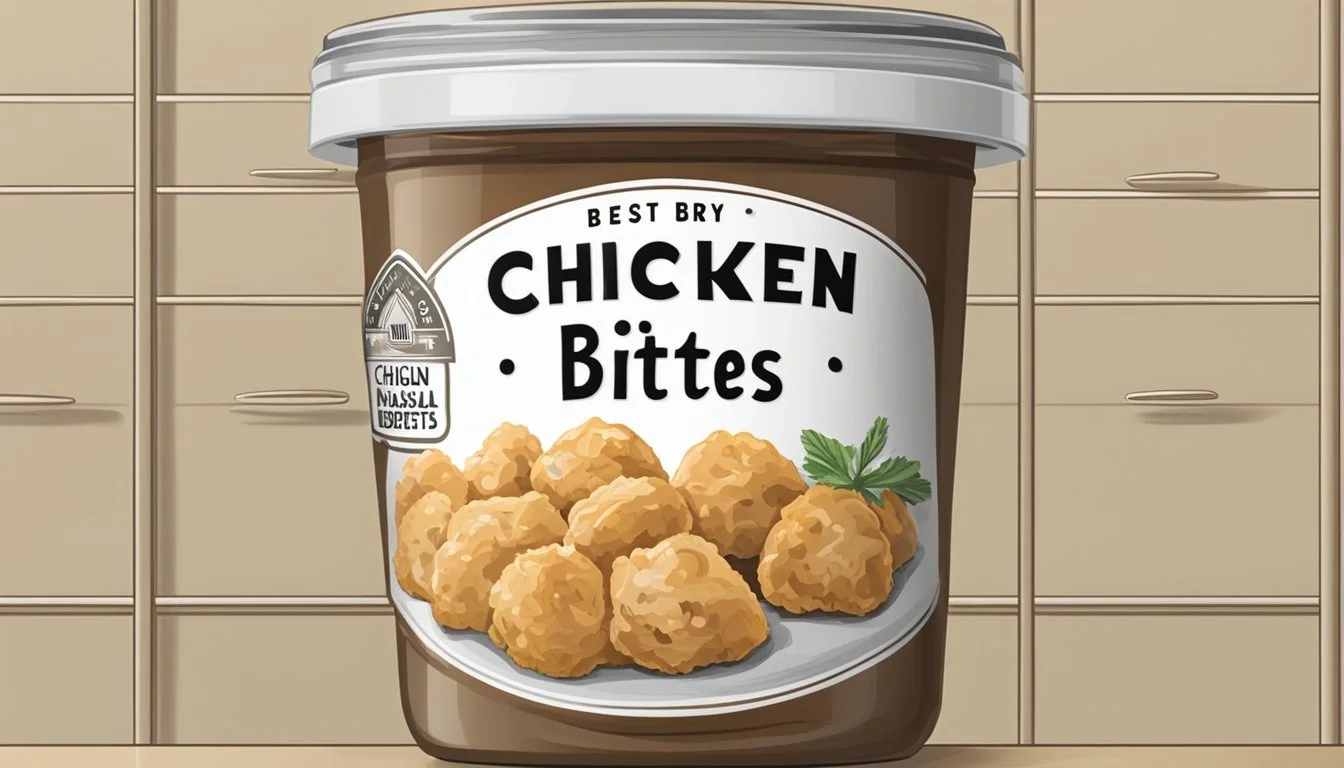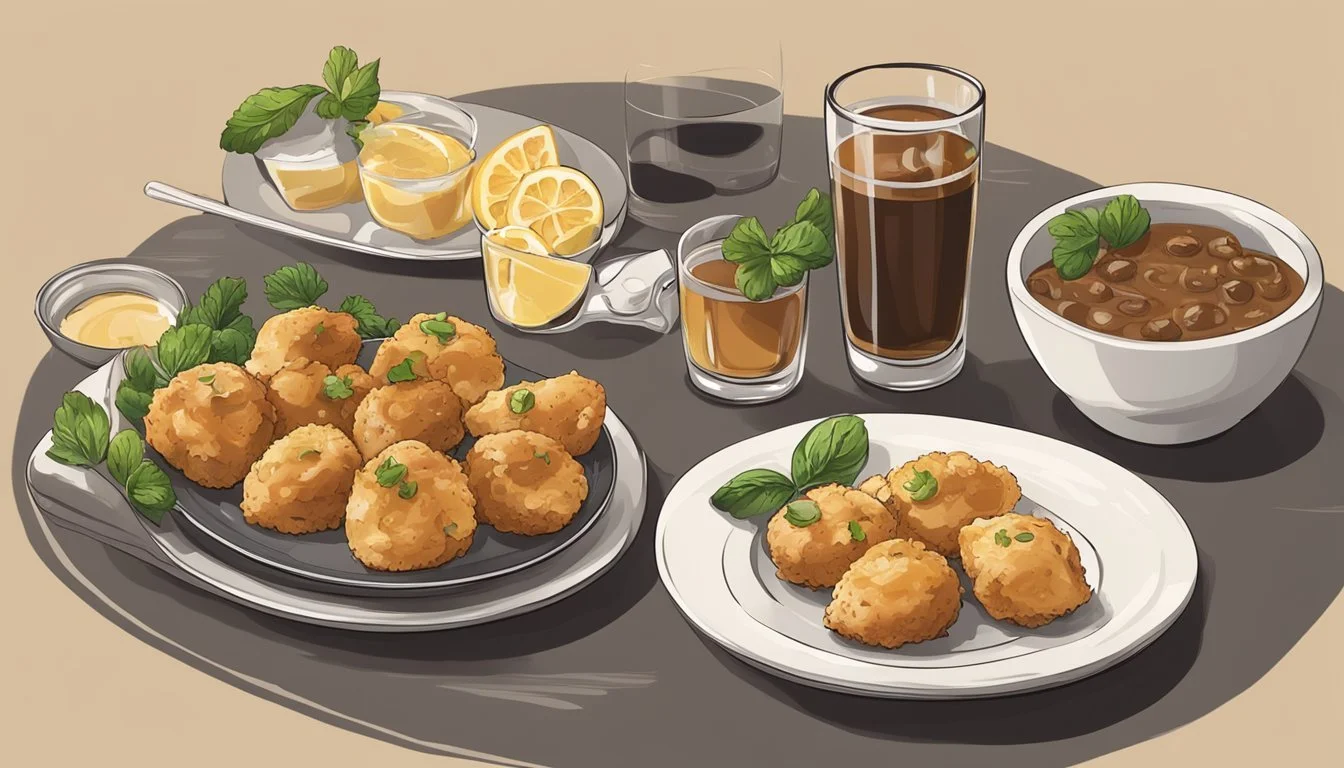How Long Do Chicken Marsala Bites Last?
Storage Tips and Shelf Life
Cooking Chicken Marsala bites takes inspiration from the classic Italian-American dish known for its rich flavors. Prepared with tender chicken, savory mushrooms, and a gloss of Marsala wine, these bite-sized morsels are a delightful treat. Understanding how long they last ensures you can savor every bite while maintaining quality and safety.
Chicken Marsala bites can last up to four days when stored properly in the refrigerator. It's essential to keep them in an airtight container to prevent any moisture loss and to maintain their delicious flavors. This timeframe allows you to enjoy leftovers without compromising on taste or safety.
When it comes to freezer storage, Chicken Marsala bites can last up to three months. Freezing helps preserve the integrity of the ingredients, extending their shelf life significantly. Make sure to thaw them thoroughly before reheating to enjoy a dish that's as good as fresh.
Understanding Chicken Marsala
Chicken Marsala, a classic Italian-American dish, features tender chicken cutlets, a rich Marsala wine sauce, and mushrooms. Its versatility and simple ingredients make it a staple in many kitchens and Italian restaurants.
Origins and Popularity
Originally from Sicily, Chicken Marsala became popular in the U.S. as Italian immigrants introduced it. The dish is named after Marsala wine, a key ingredient hailing from the region of Marsala. Italian-American cuisine embraced this dish, making it a restaurant favorite. Its appeal lies in its robust flavors and relatively easy preparation, making it accessible for home cooks and professional chefs alike.
Key Ingredients
The key ingredients define the flavors of Chicken Marsala:
Chicken: Typically, chicken breast or cutlets are used.
Marsala Wine: Essential for the sauce, it offers a unique sweetness and depth.
Mushrooms: Add an earthy flavor and complement the wine sauce perfectly.
Flour: Used to coat the chicken, providing a slight crispiness.
Butter and Olive Oil: For sautéing and adding richness.
Salt and Pepper: Basic seasonings that enhance all other flavors.
These ingredients create a harmonious and flavorful dish.
Variations of the Dish
Chicken Marsala accommodates several variations.
Creamy Marsala: Adding heavy cream makes the sauce richer and more indulgent.
Vegetable Additions: Some recipes incorporate shallots, garlic, or thyme for added complexity.
Serving Options: It pairs well with pasta, rice, or polenta, allowing flexibility in presentation.
Each variation offers a different take while maintaining the core essence of the dish, demonstrating its versatility and enduring appeal.
Preparation Techniques
Chicken Marsala requires specific steps in marinating, cooking, and serving to enhance its flavors and ensure it remains fresh. Each aspect, from seasoning to final presentation, plays a crucial role in making this dish memorable.
Marinating and Seasoning
Start by tenderizing the chicken cutlets to ensure they cook evenly. Lay each cutlet inside a plastic bag and pound it to an even 1/4-inch thickness using a meat mallet or rolling pin.
Seasoning is essential for flavor. Combine salt, black pepper, and dried Italian herb seasoning in a shallow bowl. Coat the chicken in the seasoning mixture, ensuring an even coverage. Some recipes suggest lightly dredging the cutlets in flour for a crispier texture when cooked.
Marinating time varies based on taste. For a quick weeknight meal, a 10-15 minute rest after seasoning can be sufficient.
Cooking Methods
A mix of oil and butter is typically used to cook Chicken Marsala. Heat a skillet over medium-high heat and add equal parts butter and olive oil until melted and foamy.
Place the seasoned chicken cutlets in the skillet and cook until they are golden brown, about 3-4 minutes per side. Remove the chicken and keep warm.
Next, sauté garlic and mushrooms in the same skillet until tender. Deglaze the pan with Marsala wine and cooking sherry, then simmer to reduce the sauce. Return the chicken to the skillet, cover, and let it simmer for an additional 10 minutes, ensuring the flavors meld.
Serving Suggestions
Chicken Marsala pairs well with various sides. Commonly served over mashed potatoes, pasta, or polenta, these starches help absorb the rich sauce.
For a balanced plate, consider adding a sprinkle of fresh Italian parsley for color and freshness. Serve the chicken hot, ensuring it remains tender and juicy.
When plating, lay the chicken cutlets first, then spoon the mushroom-wine sauce over them. This method ensures an even distribution of flavors.
Storage and Preservation
Chicken Marsala bites can last a while if stored correctly. Key factors include proper refrigeration, freezing techniques, and understanding the typical shelf life of each storage method.
Proper Storage Conditions
To maintain the quality of Chicken Marsala bites, storage conditions are crucial. If you're planning to eat the leftovers within a few days, store them in the refrigerator. Place the bites in an airtight container and cover them with a layer of foil to prevent moisture loss and odors from other foods.
If you need a longer storage duration, freezing is the best option. Wrap the bites individually in plastic wrap or foil, and then place them in a freezer-safe bag or container. Be sure to label each package with the date to track their storage time. When freezing, ensure that the freezer is set to 0°F (-18°C) or lower to keep the bites safe from bacterial growth.
Shelf Life Considerations
Refrigerated Chicken Marsala bites typically last for 3 to 4 days. The Marsala sauce, being rich and flavorful, will maintain its taste within this timeframe, though it may thicken slightly. Ensure the refrigerator temperature is set between 32°F and 40°F (0°C and 4°C).
For freezing, Chicken Marsala bites can last up to 2-3 months. While freezing helps preserve the bites, some textural changes may occur. Thaw the bites in the refrigerator before reheating them to avoid any texture degradation. Always use within the recommended timeframe to ensure the best quality and taste.
Nutritional Profile
Chicken Marsala offers a mixture of essential nutrients, balancing calories, protein, and fats. Its nutritional value varies based on ingredients like butter, cream, and olive oil.
Health Benefits and Concerns
Chicken Marsala contains significant protein from boneless skinless chicken breasts, supporting muscle growth and repair. Vitamin B6, iron, and potassium contribute to vital bodily functions. Olive oil adds monounsaturated fats, promoting heart health.
On the downside, butter and cream increase saturated fats, which can adversely affect heart health if consumed excessively. Caloric content can range widely, with a typical serving containing between 356 to 800 calories depending on the recipe and portion size. Moderation is key in maintaining a balanced diet.
Dietary Considerations
This dish suits various dietary needs due to its versatility. For low-carb diets, pair it with non-starchy vegetables instead of pasta or rice. Those on a low-fat diet might reduce or substitute butter and cream with lighter alternatives.
For gluten-free diets, ensure any added thickeners or coatings are free from gluten. Despite its diverse nutrient profile, people should be aware of its higher fat content. Keep portion sizes in check to fit into daily nutritional goals, especially when concerned with calorie intake and overall dietary balance.
Pairing with Sides and Drinks
Chicken Marsala bites are best enjoyed with thoughtfully chosen side dishes and beverages, enhancing their savory flavors and creating a delightful dining experience.
Complementary Side Dishes
Rice is a popular choice, absorbing the rich Marsala sauce and providing a subtle backdrop to the dish. Whether jasmine or basmati, the soft grains balance the savory notes beautifully.
Asparagus offers a crunchy texture and fresh taste that complements the flavor of Chicken Marsala. Seasoned with black pepper and a squeeze of lemon, it's both nutritious and delicious.
Italian Bread is another great side. Its crusty exterior and soft interior are perfect for sopping up any remaining sauce.
For a fresh element, a simple Salad with mixed greens, cherry tomatoes, and a light vinaigrette can add a refreshing contrast.
Creamy Parmesan Polenta also pairs well, its smooth texture and cheesy flavor working harmoniously with the dish.
Wine and Beverage Pairings
Pairing Chicken Marsala bites with the right beverage enhances the meal's overall experience. Marsala Wine is a classic choice. Dry Marsala can complement the savory aspects, while Sweet Marsala adds a rich, somewhat sweet counterpoint.
For those preferring non-alcoholic options, a light sparkling water with a hint of lemon can cleanse the palate between bites.
Italian Wines like Chianti or Pinot Grigio also pair nicely.
A robust red wine complements the hearty, savory flavors, while a crisp white wine keeps the meal light.
Choosing the right side dishes and beverages ensures a balanced meal that highlights the best attributes of Chicken Marsala bites, making it a versatile option for weeknight dinners or special occasions.







